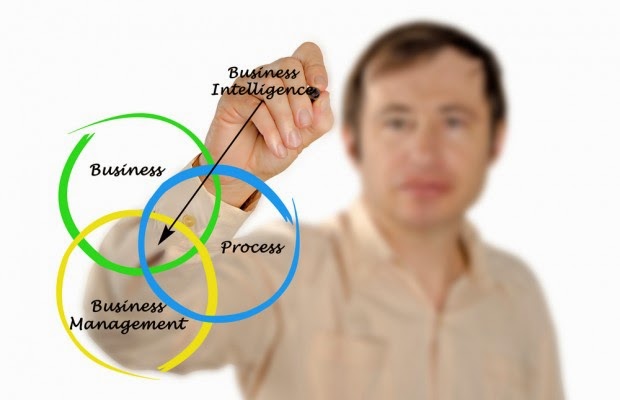 There are 7 main advantage of business intelligence that will provide value to the company are as follows:
There are 7 main advantage of business intelligence that will provide value to the company are as follows:1. Consolidation of information with business intelligence run inside the company, the data will be processed in a single platform and distributed in the form of useful information (meaningful) to the entire organization. In the absence of information asymmetry, collaboration and consolidation in the enterprise can be strengthened. With consolidation, it was possible in the manufacture of cross-functional and corporate-wide reports. Though it must be admitted, is also able to benefit provided by the ERP software.
2. In-depth reporting Software Business Process Management (BPM) is able to provide reports and analysis, but it is quite simple and just opposite the internal condition. While the Bank is able to provide information on issues larger businesses at the strategic level.
3. Customized Graphic User Interface (GUI) Some ERP is trying to create a user friendly GUI, but business intelligence step further by providing a GUI customization facility. So that the GUI is far from being technically and provide views of the business in accordance with the wishes of each user.
4. It's a bit of a technical problem due to its user-friendly operating minimize the possibility of user error, and business intelligence is the only software on the top layer (information processing) and not the business process management.
5. Lower procurement costs because business intelligence software that works only on the top layer of information processing, its software prices are not as expensive as ERP. Acquisition costs became cheaper than the ERP. Moreover, today many are also supported by the open source business intelligence products.
6. Flexible business intelligence databases opened the possibility to collaborate with ERP as a supplier of databases that will be processed into reports and scorecards, but BI can also work from the database are made separately. Business intelligence also be open for use by professional analysts and researchers, the database is processed are secondary.
7. Responsiveness other business intelligence properties not owned by the ERP is in terms of speed (responsiveness). For example, in calculating the service level as one of the Key Performance Indicator (KPI). business intelligence functionality will alert the user before the lower limit in the service level (lower limit) is exceeded. As a result, the problem can be addressed before it actually surfaced. One example pad responsive nessa healthcare industry, the use of business intelligence credited with preventing the spread of a disease / epidemic widely (outbreak).














